
Ta 152H-0
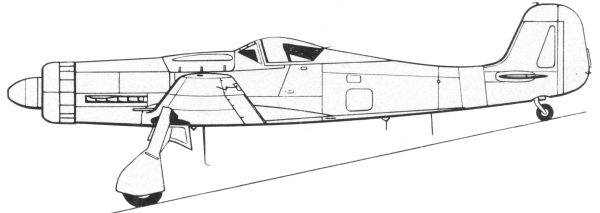
The
Ta 152 was to be Kurt Tank's ultimate fighter. It had a long and
painful gestation period with constantly changing rolls to play and a
long and fruitless search for a good high altitude power plant suitable
to the airframe. It finally took shape in the chaos that was the last
year of the war in Germany. Built in small numbers and seeing little in
the way of actual combat the entire history would take more time than I
want to expend for a kit review but there are plenty of resources
available, both on line and in book form for those wishing to know more
about this fascinating aircraft.
The Kit
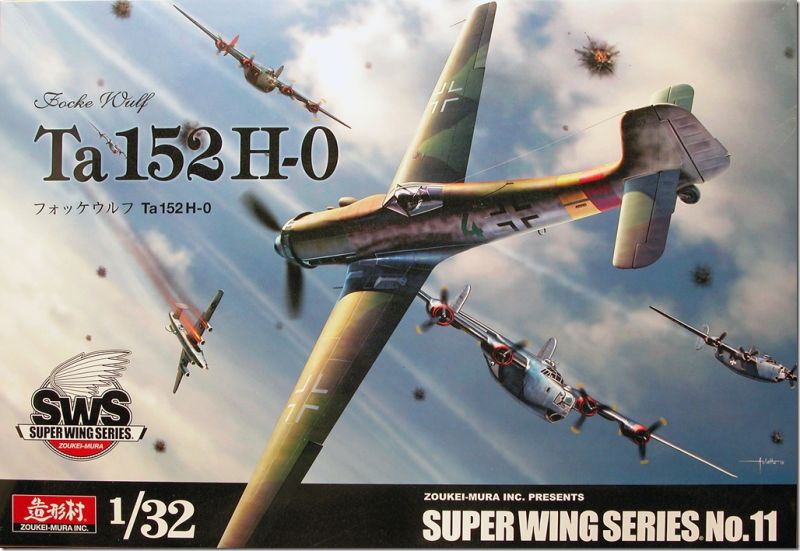
That said let's see what's in the box. the kit comes in a large, deep and sturdy top open box. The bottom half of the box is made from a heavy grade cardboard. Inside the box is packed with sprues. Each sprue is individually bagged and one is bagged inside a bag with a larger sprue so everything is well protected from surface abrasions. Unlike the 152H-1 kit, Zoukei-Mura has molded this one all in gray color instead or multi colors. Some of the other changes are less noticeable. There were complaints on the H-1 kit that some of the surface detail was too emphatic, rivets to prominate and panel lines too large. On this kit the rivets, both raised and recessed are more subtle and closer to scale and the panel lines thinner and more refined. The surface finish is nearly glossy and the surface detail consists of recessed panel lines, rivets and fastener detail with some raised detail where appropriate. As you can see in the photos below the fuselage is broken up into quite a few sections. I can't say from experience but I have heard that the tail to fuselage join is very poor fitting and will require a lot of work to achieve a smooth joint. The inside of the fuselage has some structural detail but is also peppered with ejector pin marks, some which will show and may be difficult to clean up without damaging surrounding detail.
The wings are also broken up in a lot of pieces and include separate control surfaces and flaps. If you wish to display the flaps open there is internal detail and also more ejector pin marks to deal with. The gun bay access hatches are separate. The fabric on the control surfaces consists rib tapes. The rib tapes seem a bit heavy to me but it's better to have some to remove than need to build up. The tail surfaces also feature separate control surfaces. A check of the airframe parts found them to be free of noticeable defects and nearly flash free. Both open and closed cowl flaps are supplied.
The cockpit is well appointed and should look OK when painted up. The instrument panel is provided both as a clear part as in the H-1 kit and now also as a gray part. A decal is provided for those who don't want to paint it. In areas around the cockpit but in areas that can't be seen are a Nitrous oxide tank behind the cockpit and two fuel tanks below the cockpit floor. Also included with the parts on the sprue with most of the cockpit is a large spar unit which mimics that in the real plane. The engine parts are nicely detailed kit in a kit that takes up four pages in the instruction manual should you wish to display it, needing only some additional wiring and plumbing to fill it out. The landing gear are well detailed, the wheels in halves and not weighted, hubs are separate. The inner gear doors feature actuators and there are separate brake lines for the main gear struts.
See photos below.
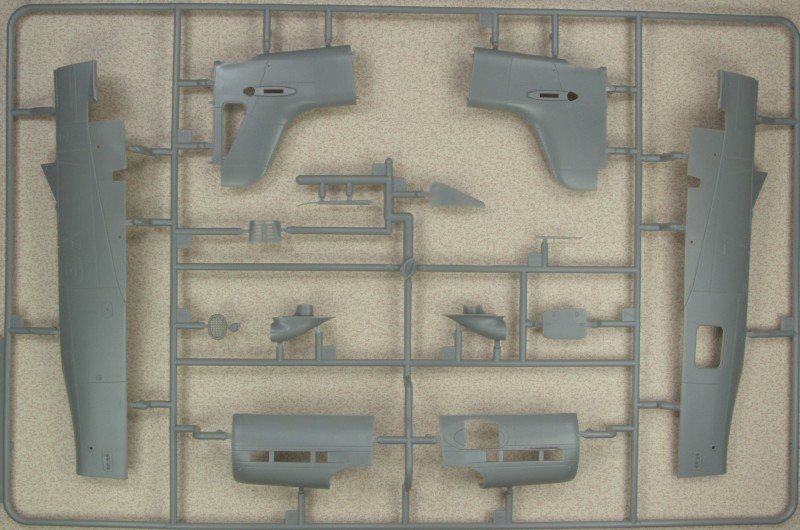
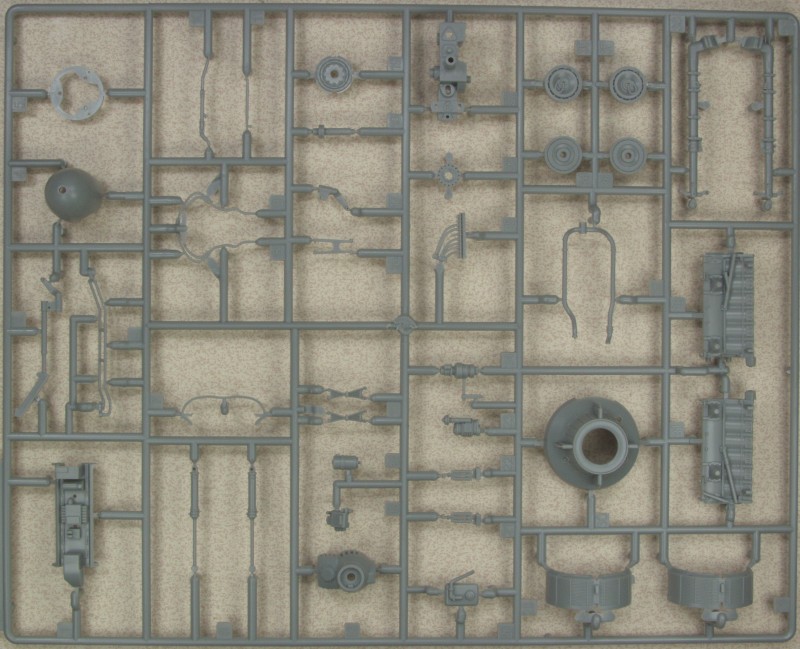
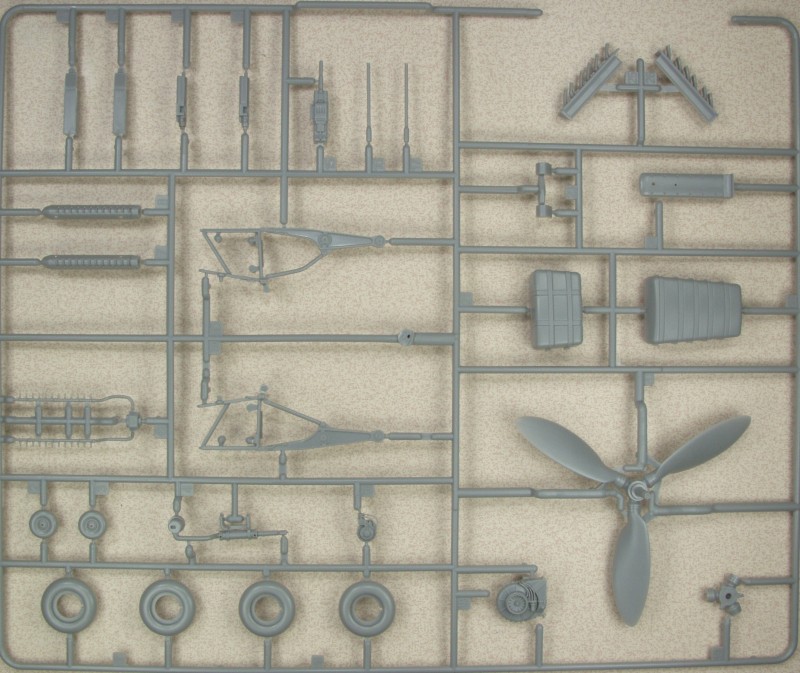
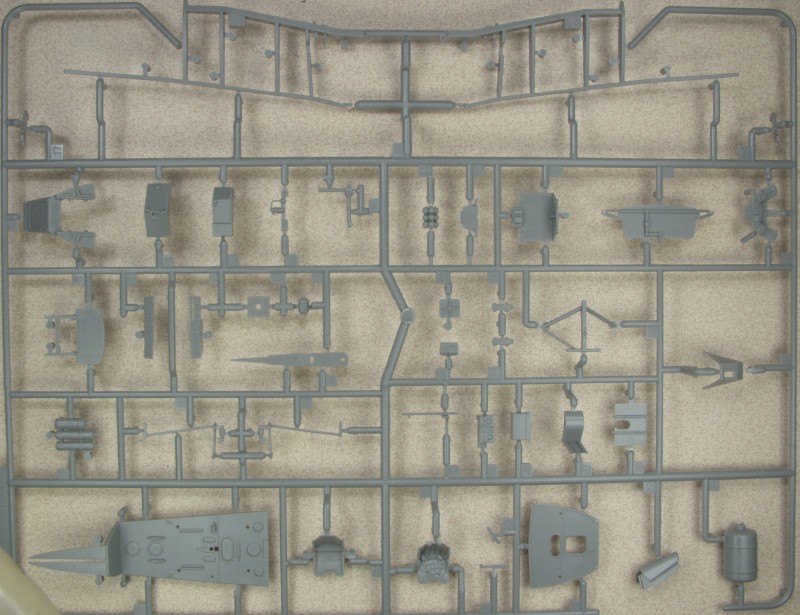
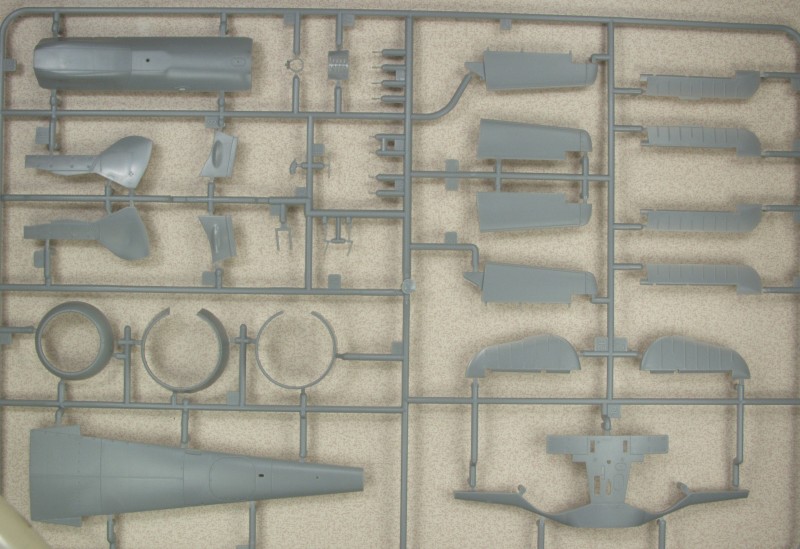
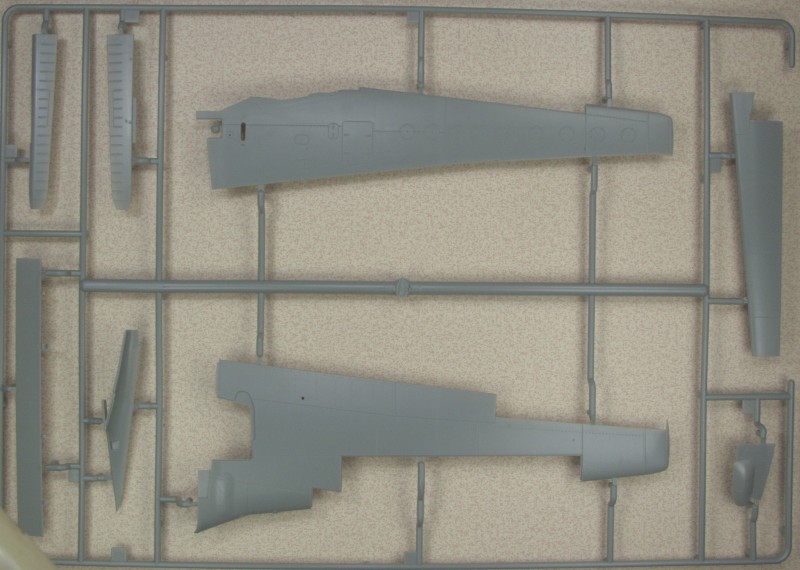
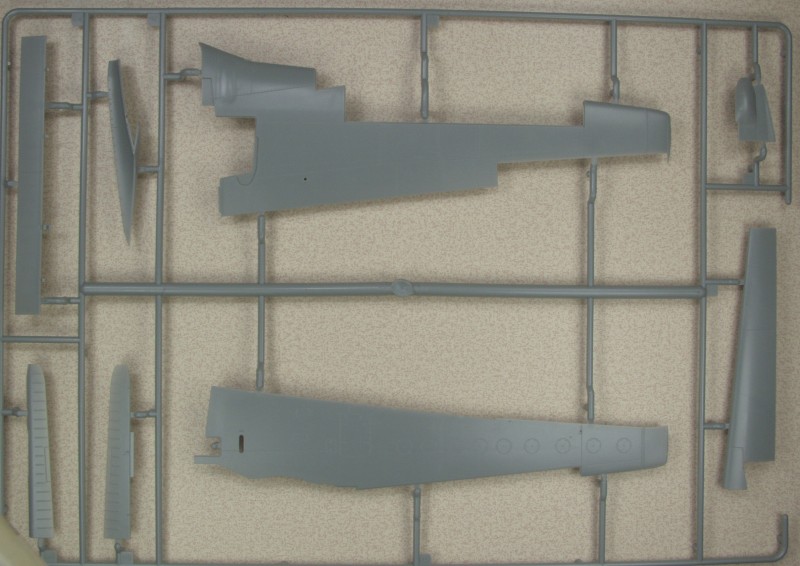
The clear parts are reasonably thin and clear with only a bit of distortion. The canopy is in two pieces and can be displayed open or closed. Only four other parts are molded clear, the instrument panel, gun sight and two small lenses. See below.

The decals are thin, well registered and display minimal excess clear film. The sheet includes lots of stencils, instrument panel, side consoles, color bands for the tail, two different styles of spinner spirals and multi part swastikas. Markings are supplied for three aircraft, none of which are identified as to squadron or pilot. There are lots of extra numbers supplied so other aircraft can be done but you'll need to do your homework on this. Packaged with the decals is a set of vinyl masks for the canopy. See below.
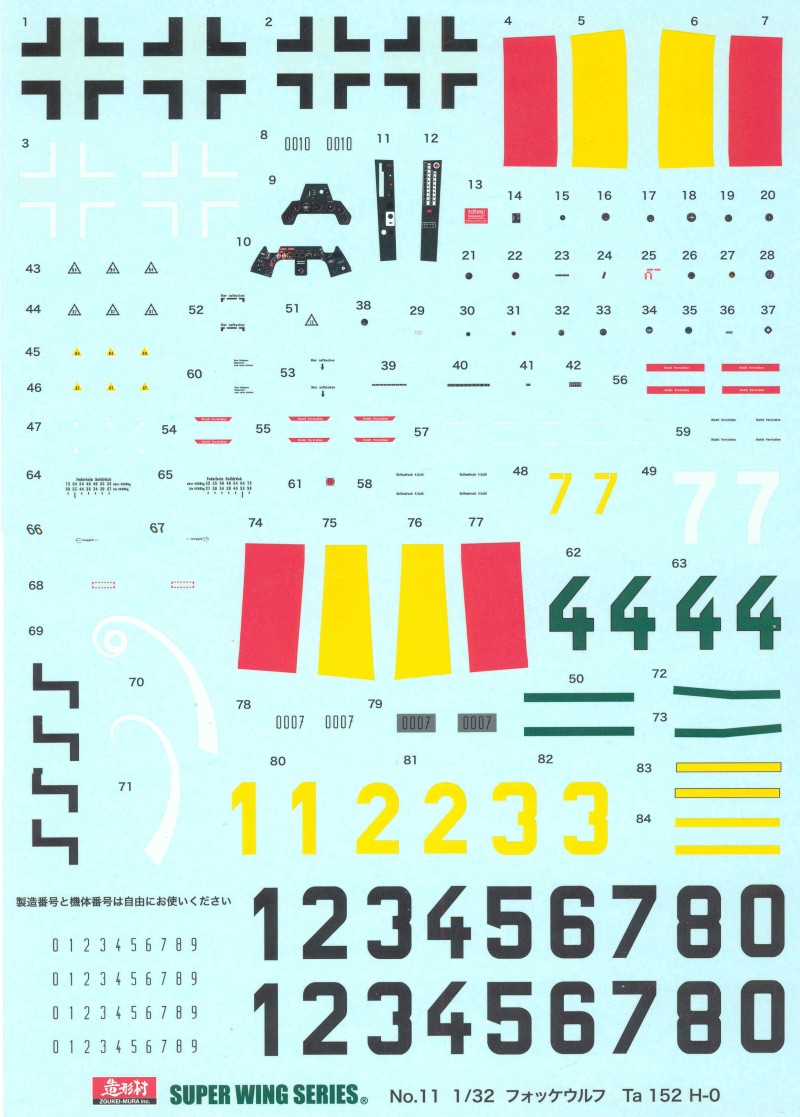
The instructions are done up in a bound booklet with the appearance on the outside of being an aircraft technical manual. This time it is 36 pages long including the front and back covers. The first five pages include a table of contents, a brief history, technical information on the engine and weapons, assembly notes, icon chart, and color chart. Page 6 starts the assembly steps and as with their first release the diagrams are either photo realistic or 3D cad drawings and are very detailed often providing multiple views. Color call outs are shown also. The first assembly is the cockpit covered with three pages of assembly and a page of color photos of the completed assembly. Next up is the engine with 3 1/2 pages of assembly and a half page of photos, then 2 1/3 pages of fuselage assembly and 2/3''s page of photos. There are then 9 1/2 pages covering the wing, wing to fuselage and engine to fuselage assembly with a half page of photos showing the landing gear in detail. The final bits are assembled in the next two pages followed by a page with photos of the completed model. The following 2 pages are color photos calling out painting colors and decal locations and two more pages with color profiles calling out painting variations. The last two pages have parts maps. Rather than redo an entirely new manual Z-M supplies the original H-1 manual and provides a four page glossy supplement manual that details the changes between the H-1 and the H-0 and provides diagrams for the different markings supplied with this kit. Shown below is the cover to the main instruction manual and below that the cover of the H-0 changes supplement.
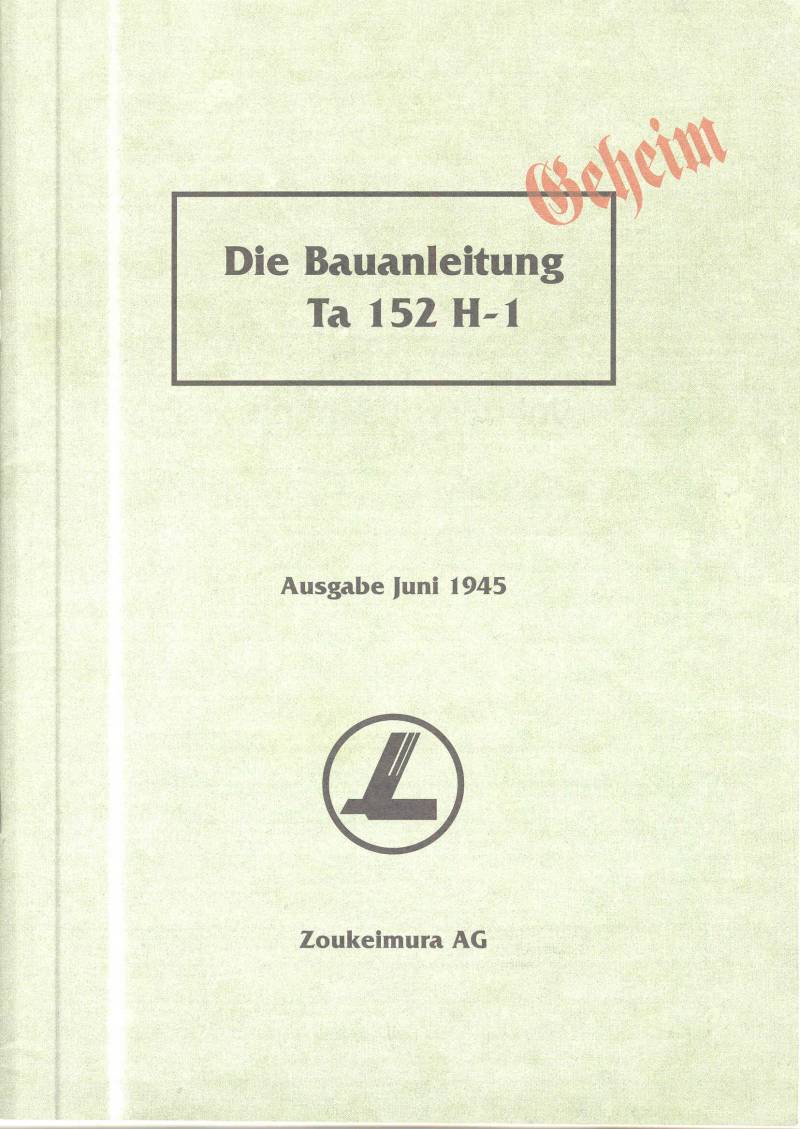
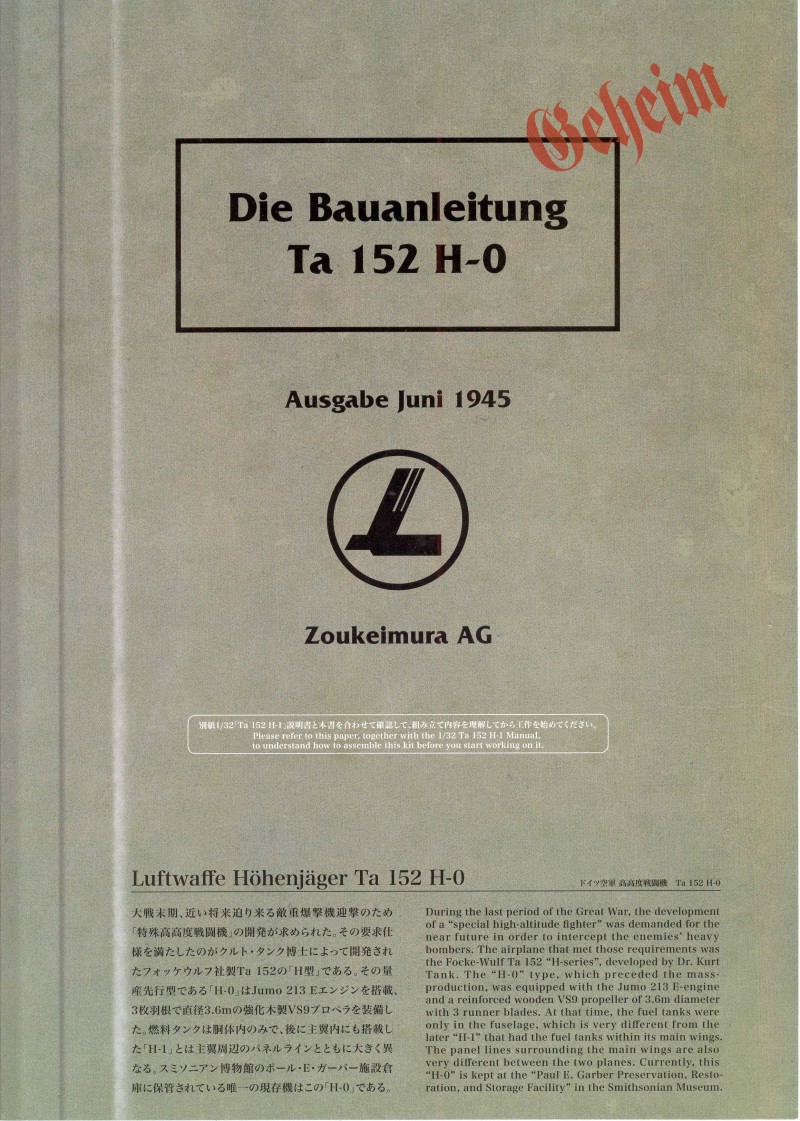
After Market Goodies
I'm not going to list anything here as over time there have been a number of items available. ZouKei-Mura
has taken a different path in this area in that after market items are
available only through them. The photo etch for instance is made by
Eduard but only sold through ZouKei-Mura. Not all the items are add ons for the aircraft as some are pilots and ground crew. ZouKei-Mura's
experience in the past was primarily doll making and it's a natural for
them to create interesting figures to go with their models. If you
might be interested in any of these items check out there website here. Sprue Brothers also carries a good stock of their accessories.
Conclusions
This kit illustrates the mark of a manufacturer that listens to feedback from their customers and takes action on that feedback. Something that well help build brand loyality over time. If compared to the second kit in this series, the H-1, it is easy to see that it has been refined and getting rid of the multi colored plastics for various parts takes away the toy look that the earlier kit had. I've read there are some fit issues, one of the worse being the fit of the tail to the fuselage. It is a rather intense kit with a lot of parts and for that reason alone I would only recommend the kit to modelers with a moderate amount of experience. I have not seen a lot of them built but have seen one or two and the kit can be built into a very nice model of the Ta 152.
Links to kit build or reviews
Additional in box reviews can be found here and here.
References
Probably the best printed reference is 'The Focke-Wulf Ta 152' by Thomas H. Hitchcock and published by Eagle Limited Editions.
Back to the 1/32 German Aircraft Page